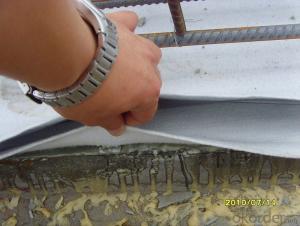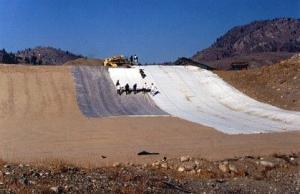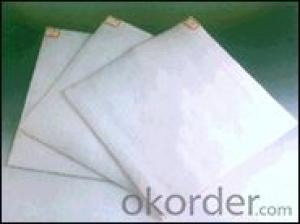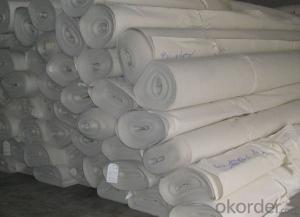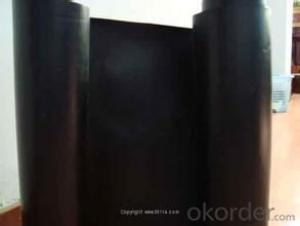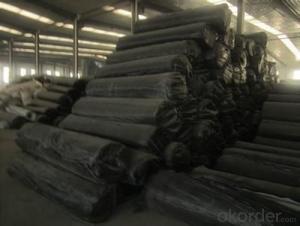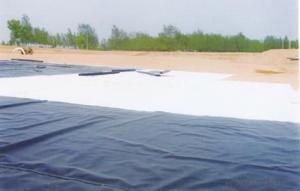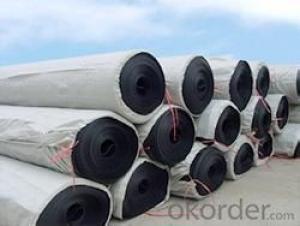Geotextil 200gr Anti-Grass Cloth with Good Quality
- Loading Port:
- China Main Port
- Payment Terms:
- TT or LC
- Min Order Qty:
- -
- Supply Capability:
- -
OKorder Service Pledge
OKorder Financial Service
You Might Also Like
1. Product Description:
The anti-grass cloth is a kind of vertical and horizontal weaving plastic woven cloth,
It has good quality of permeability,water seepage and Prevention and control of weeds.
Anti-grass cloth can not only prevent plant roots under the ground, beautify the
environment, improve labor efficiency and economic benefit, prevention and
control of environmental pollution, reduce pesticide use, also can prevent insects
and small animals and grow.
2. Product Characteristic:
1.Prevent leakage disposal in landfill or waste water or waste dregs disposing field.
2.River bank ,lake dam ,mine remainings ,resevoir ,tunnel ,liquid storage pool(pit ,mine)
3. Anti-salt leakage in roadbed and other ground sill.
4.The plane direction laying of dam ,the vertical direction laying for ground still used in the
construction fence and waste material field.
3.Specification :
1.material:pp
2.length :50-100m
3.width:1-8m
4. Type: Geotextiles
5. Geotextile Type: Woven Geotextiles
6. Color: black
4. Reference Picture:


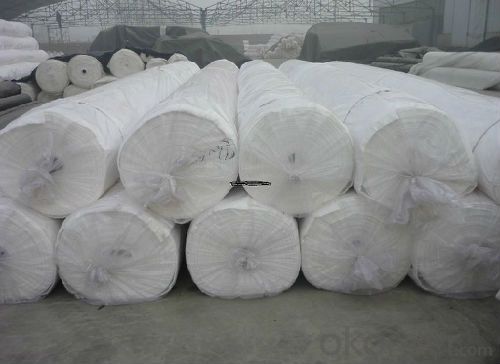
- Q: What are the considerations for geotextile selection in mining operations?
- When selecting geotextiles for mining operations, several considerations need to be taken into account. Firstly, the geotextile should be able to withstand the specific conditions of the mining site, such as high pressure, abrasion, and chemical exposure. It should also have sufficient strength and durability to support the load and prevent soil erosion. Additionally, the geotextile's permeability should be assessed to ensure proper drainage and filtration of water or other liquids. Lastly, its installation and maintenance requirements, as well as cost-effectiveness, should be considered to ensure seamless integration into the mining operation.
- Q: Artificial lake can not do geotextile waterproofing? What method can not do geotextile waterproof?
- Artificial lake with geotextiles do waterproof? Artificial lake to the bottom of the water leakage. The lake design in the use of geotextile, it is not anti-seepage, it should be used for filtering. There is no use of course there will be different results. If the design has that use. If the lake is to prevent water leakage, there are many ways. 1. Laying a professional anti-seepage geomembrane, composite geomembrane; 2. Laying a layer of sticky heavier little permeability of the clay, pressure solid. 3. There are also laying a layer of geology known as GCL geosynthetics, full name is bentonite waterproof blanket. Geotextile is water seepage, the general is not anti-seepage, can be used to filter. Only in the geotextile composite anti-seepage film to prevent seepage, and composite film after the geotextile has not called geotextile, and should be called composite geomembrane. But because of habitual problems, and now there are people called the seepage geotextile.
- Q: How do geotextiles contribute to soil improvement in soft ground areas?
- Geotextiles contribute to soil improvement in soft ground areas by providing reinforcement and stabilization. They act as a barrier to prevent the mixing of soil layers, reducing settling and heaving. Geotextiles also enhance drainage and filtration, allowing water to pass through while retaining soil particles. This helps in preventing erosion, maintaining the integrity of the soil, and improving its overall stability.
- Q: Can geotextiles be used in landfill construction?
- Yes, geotextiles can be used in landfill construction. They are commonly used as liners, covers, and drainage materials in landfills to prevent soil erosion, control water flow, and improve stability and performance of the landfill structure.
- Q: Geotextile what role
- Geotextile is a new type of building materials, raw materials are polyester, acrylic, nylon and other polymer polymer synthetic fiber.According to the manufacturing method is divided into: there are two types of textile and non-woven geotextile geotextile with anti- Filter, drainage, isolation, reinforcement, protection, sealing and other functions, it is compared with conventional masonry and concrete anti-seepage effect, with low investment, simple construction process, short duration, good anti-seepage effect, effective channels The use of high coefficient of the advantages of water conservancy project dam and slope protection, channel isolation, seepage; road, railway, airport runway foundation isolation, filter, drainage, slope, retaining wall and road reinforcement, drainage; Construction of the soft foundation treatment, beach embankment, harbor wharf and breakwater reinforcement, drainage; landfill, thermal power plant ash dam, concentrator tailing dam isolation, seepage; geotextile has been widely used in infrastructure construction , And gradually applied to a wider range of areas.
- Q: Can geotextiles be used in soil erosion control on construction sites?
- Yes, geotextiles can be used in soil erosion control on construction sites. Geotextiles are permeable fabrics that can be placed on the soil surface to prevent erosion by stabilizing the soil and allowing water to pass through while retaining sediment. They are effective in controlling erosion, reducing sediment runoff, and maintaining soil integrity during construction activities.
- Q: Can geotextiles be used in geogrid reinforced slopes?
- Yes, geotextiles can be used in geogrid reinforced slopes. Geotextiles are often used as a separation and filtration layer between the soil and the geogrid, which helps to enhance the performance and stability of the reinforced slope.
- Q: How are geotextiles affected by biological factors?
- Geotextiles can be affected by biological factors such as the growth of vegetation and the presence of microorganisms. Vegetation can penetrate and grow through geotextiles, reducing their effectiveness in providing separation and reinforcement. In addition, microorganisms can cause degradation of the geotextile material over time, compromising its structural integrity. Therefore, it is important to consider and manage these biological factors when using geotextiles in various applications.
- Q: How are geotextiles affected by mechanical stress?
- Geotextiles are significantly affected by mechanical stress as they undergo deformation and potential damage due to external forces or loads. The stress can cause the geotextile to stretch, tear, or even rupture, affecting its overall performance and functionality. Therefore, it is essential to consider the mechanical stress factors when designing or implementing geotextile applications to ensure their long-term durability and effectiveness.
Send your message to us
Geotextil 200gr Anti-Grass Cloth with Good Quality
- Loading Port:
- China Main Port
- Payment Terms:
- TT or LC
- Min Order Qty:
- -
- Supply Capability:
- -
OKorder Service Pledge
OKorder Financial Service
Similar products
Hot products
Hot Searches
Related keywords
